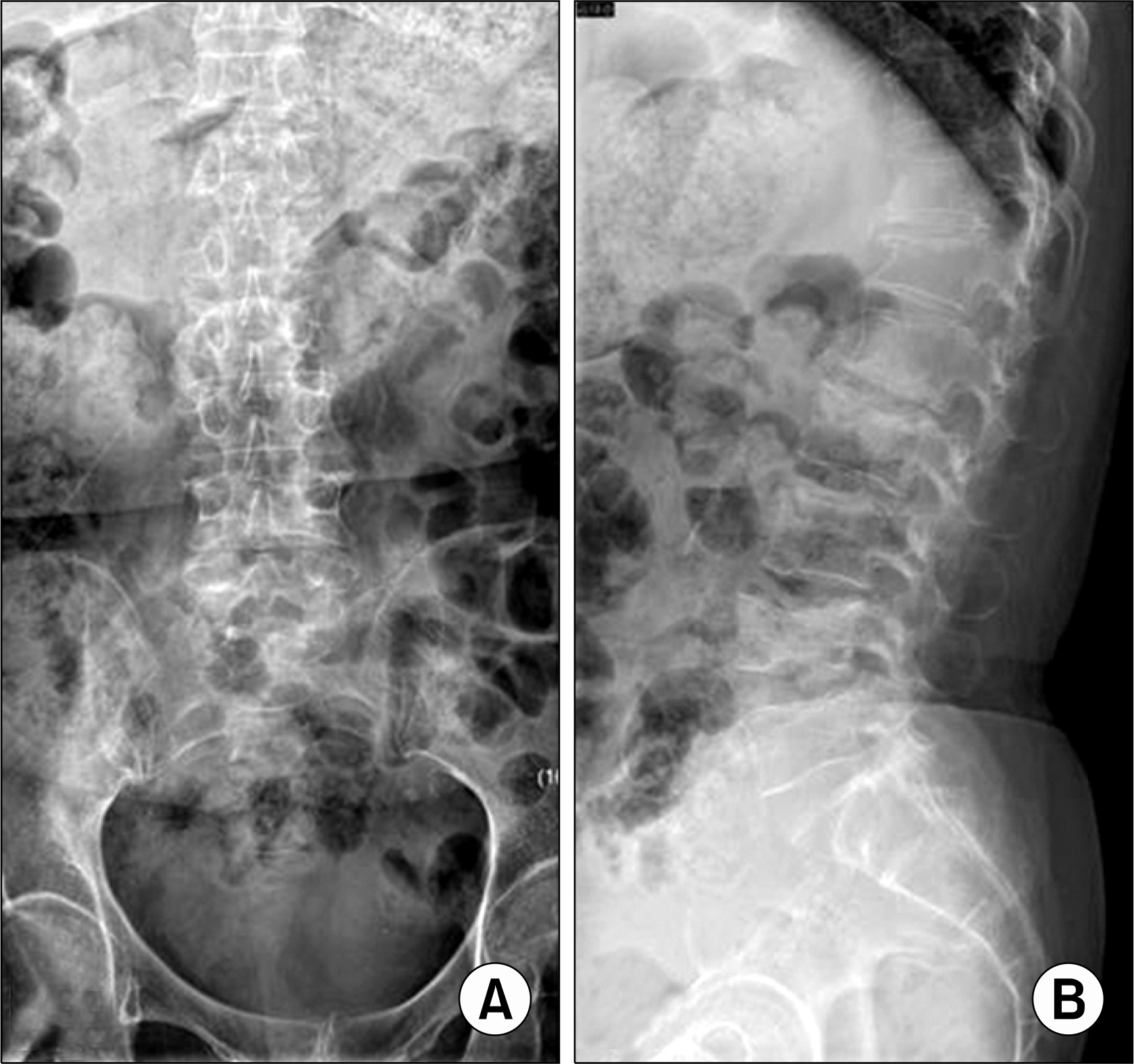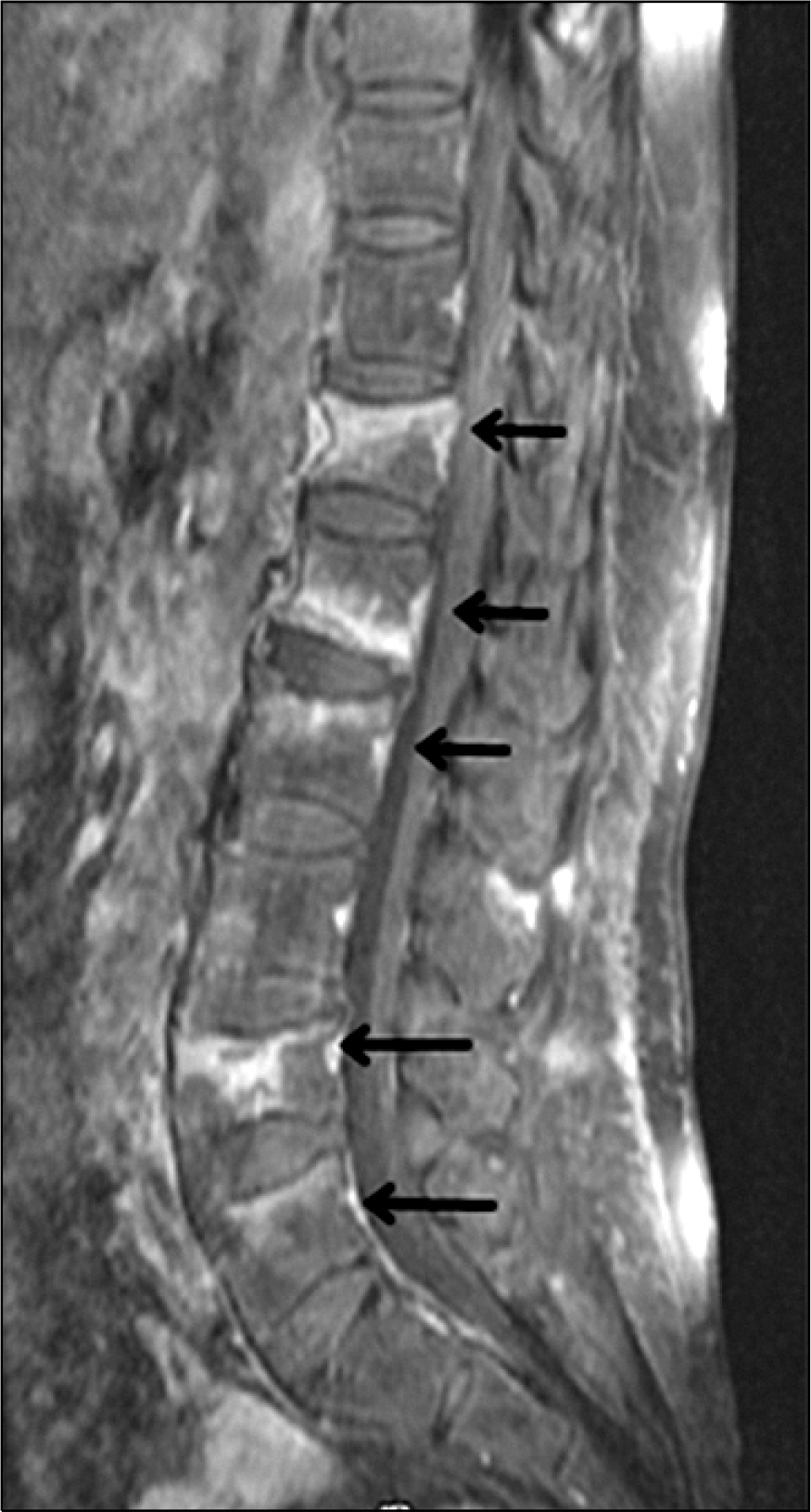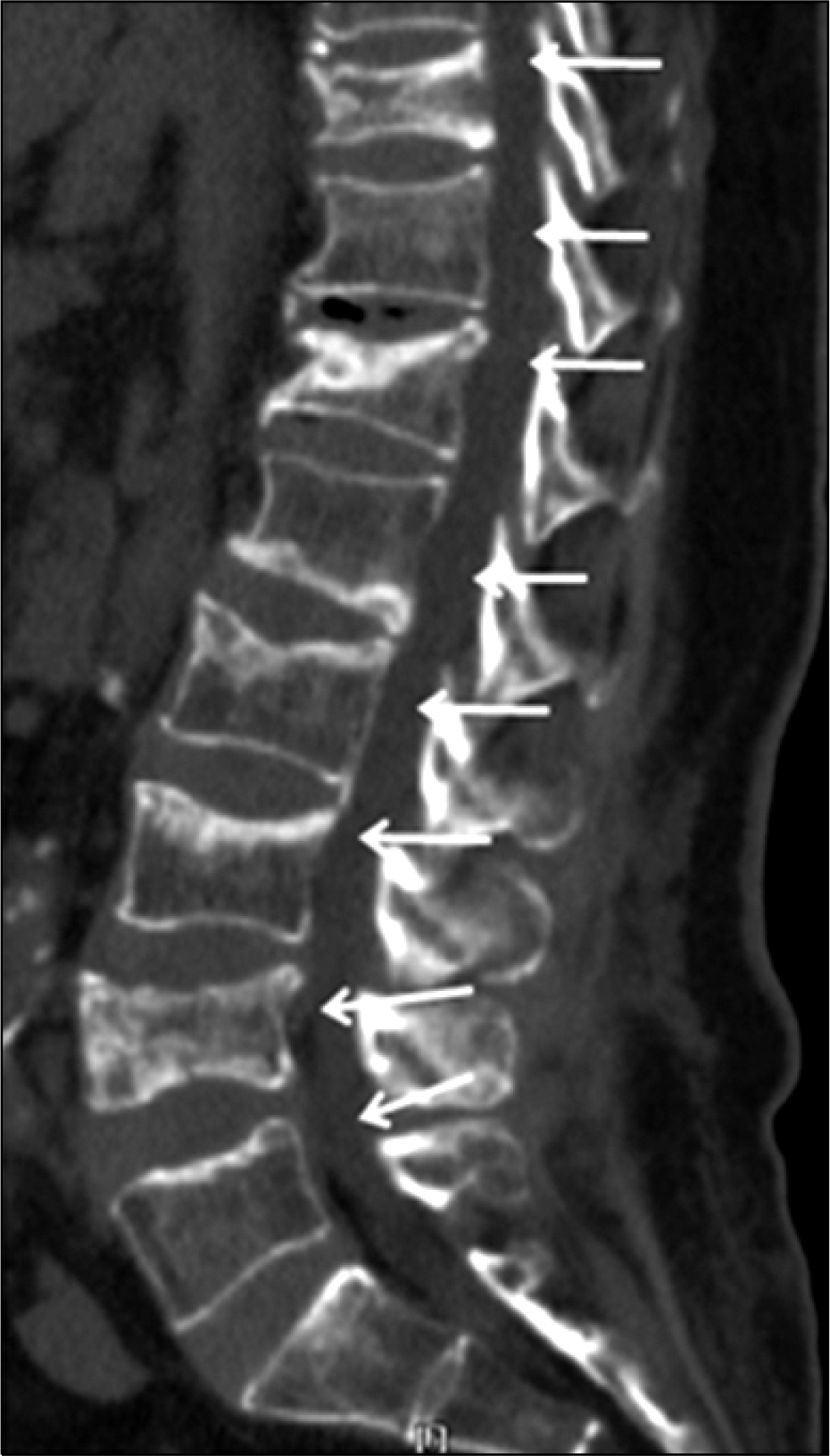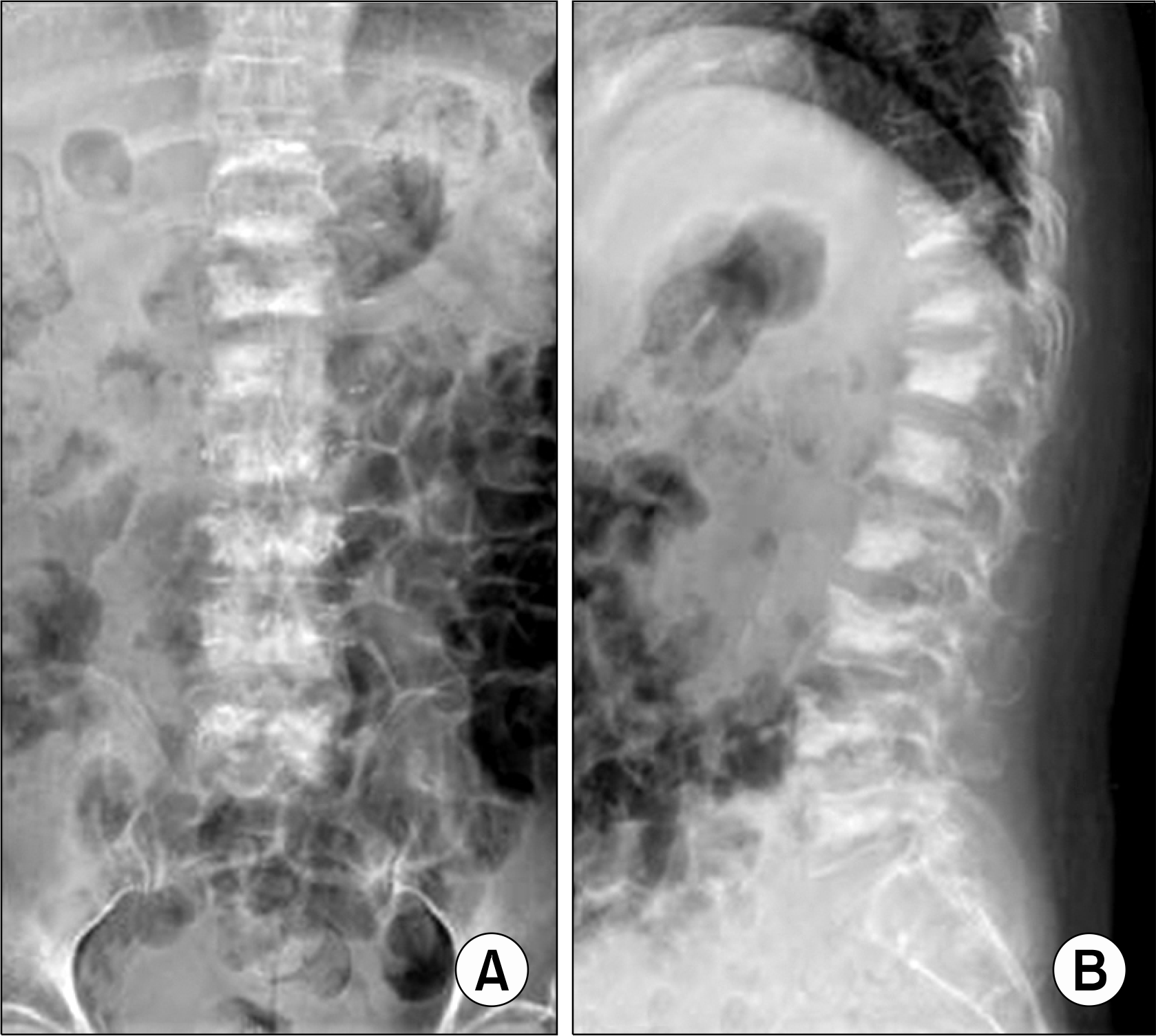Abstract
Reduced bone mineral density precedes the development of vertebral fractures in patients under long term glucocorticoid therapy. Osteoporosis is a frequent complication in steroid-dependent patients, and the risk of developing vertebral fractures in these patients is much higher than involutional osteoporosis. We described a 54-year-old patient who presented with autoimmune hepatitis and had a 6-year history of steroid medication. The patient had multiple compression fractures (T10∼L5) without trauma, and was treated successfully with multi-level vertebroplasty and an intravenous injection of bisphosphonate without complications.
References
1. Stellon AJ, Webb A, Compston JE. Bone histomorphometry and structure in corticosteroid treated chronic active hepatitis. Gut. 1988; 29:378–84.

2. Jehle PM. Steroid induced osteoporosis: how can it be avoided? Nephrol Dial Transplant. 2003; 18:861–4.
3. Reid IR. Time to end steroid induced fractures. Arch Dermatol. 2001; 137:493–4.
4. Choi WH, Kim SY, Kim TH. Vertebral fracture in long term steroid dependent patients. 1994; 1:224–9.
5. Lim SH, Kim H, Kim HK, Baek MJ. Multiple cardiac perforations and pulmonary embolism caused by cement leakage after percutaneous vetebroplasty. Eur J Cardiothirac Surg. 2008; 33:510–2.
6. Kim YJ, Lee JW, Park KW, Yeom JS, Park JM, Kang HS. Pulmonary cement embolism after percutaneous vertebroplasty in osteoporotic vertebral compression fractures: incidence, charicteristics, and risk factors. Radiology. 2009; 251:250–9.
7. Karaktoprak O, Camurdan K, Ozturk C, Ganiyusufoglu K, Aydogan M, Hamzaoglu A. Multiple-level vertebroplasty in patients with vertebral compression fractures from osteodystrophy in chronic liver disease. Acta Orthop Belg. 2008; 74:566–8.
Fig. 1.
Lumbar plain radiography (Pre-operative). Lumbar AP (A) and Lateral (B) x-ray shows multiple compression fractures (T12, L1, 2, 4, 5).

Fig. 2.
Lumbar MRI. Gadolinium-enhanced sagittal image of the lumbar spine shows signal intensity (arrow) of the fractured vertebral segments (T12, L1, 2, 4, 5).





 PDF
PDF ePub
ePub Citation
Citation Print
Print




 XML Download
XML Download